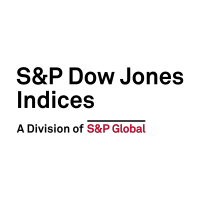Tag Archives: S&P MidCap 400
Magnificent Mid Caps and Sensational Small Caps
U.S. equities rose in 2023, with the mega-cap “Magnificent Seven” driving most of the S&P Composite 1500®’s 25% gain. While mega caps continued to outperform in January 2024, not all seven of the aforementioned group ranked highly. This has led to some market commentators looking to coin new phrases: “Sensational Six” or “Super Six” (the…
- Categories Equities
- Other Tags
The Relative Value of Insights
Many investors use the start of the year to make predictions for the upcoming year and to think about ways to express views on these themes. This undertaking is not guaranteed to add value: predicting the future is incredibly difficult and success requires correctly predicting both the drivers of future performance and the upcoming impact…
Why Do U.S. Mid-Cap Equities Matter?
Take a deep dive into the S&P MidCap 400 as S&P DJI’s Hamish Preston and Sherifa Issifu explore what makes the S&P 400 relevant globally and the distinctive sector and risk/return characteristics of this slice of the U.S. equity market.
- Categories Equities
- Other Tags
Splitting Size in U.S. Equities: S&P DJI versus MSCI in H1 2023
The first half of 2023 saw a strong rebound from 2022 for equities: the S&P 500® gained 17% as the U.S. outperformed the S&P Global Ex-U.S. BMI (up 10%). Information Technology led the way across the U.S. cap spectrum, possibly reflecting investors’ expectations regarding the potential impact of artificial intelligence. The S&P Composite 1500® combines…
- Categories Equities
- Other Tags
S&P U.S. Indices Mid-Year 2023: Analyzing Relative Returns to CRSP
Following a challenging 2022, H1 2023 hosted a recovery among U.S. equities: the S&P 500® (up 16.9%) posted its fourth-best first half since 1996, and there were gains across the market cap spectrum. But on a relative basis, and in contrast to longer horizons, the S&P Core U.S. Equity Indices lagged their CRSP counterparts in…
- Categories Equities
- Other Tags
S&P U.S. Indices H1 2023: Analyzing Relative Returns to Russell
After a challenging year in 2022, the U.S. equity market saw a strong turnaround in the first half of 2023, with the S&P 500® up 17% since year-end 2022. Exhibit 1 shows that the rebound was also observed across the cap spectrum. Returns in the second quarter outperformed the first quarter after the market shook…
- Categories Equities
- Other Tags
- Categories
- Equities
- Other Tags
Connecting the S&P/ASX 200 to U.S. Equity Icons
Many market participants have a “home bias,” typically having larger exposures to domestic securities than would be determined by their representation in the global opportunity set. Australia is no exception: compared to Australia’s 2% weight in the S&P Global BMI, Australian investors allocated an estimated 49% of their total equity allocation to domestic stocks at…
- Categories Equities
- Other Tags
Potential Applications of U.S. Equities for Asia-Based Investors
Many investors have a so-called “home bias,” allocating to their domestic market in greater proportion than would be expected based on its representation in global equity markets. Asia-based investors are no exception. Here we present our U.S. equity icons as one potential way to provide diversification for Asian investors. The breadth and depth of the…
- Categories Equities
- Other Tags
An Israeli Home with a U.S. Twist
Our new research paper shows that Israeli investors have a greater home bias than other nations: they have invested more heavily in domestic equities and allocated to the U.S. in lower proportions than their developed markets peers such as the U.K., Europe and Canada. With U.S. equities making up nearly 60% of the S&P Global…
- Categories Equities
- Other Tags
What’s in a U.S. Equity Index?
2022 was the worst year for U.S. equity indices since 2008’s Global Financial Crisis, with the S&P 500® entering a bear market and declining 18% in 2022. Despite the market blues, there were some relative winners: the S&P DJI U.S. Core Indices beat their MSCI counterparts last year, driven by differences in their methodologies. Below…
- Categories Equities
- Other Tags













































